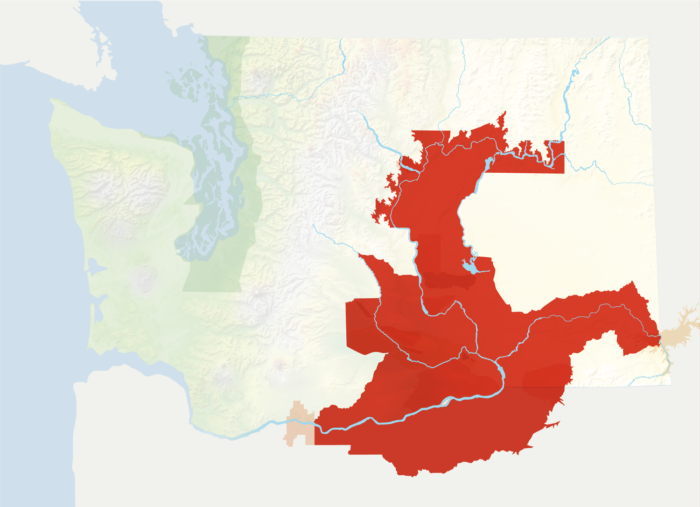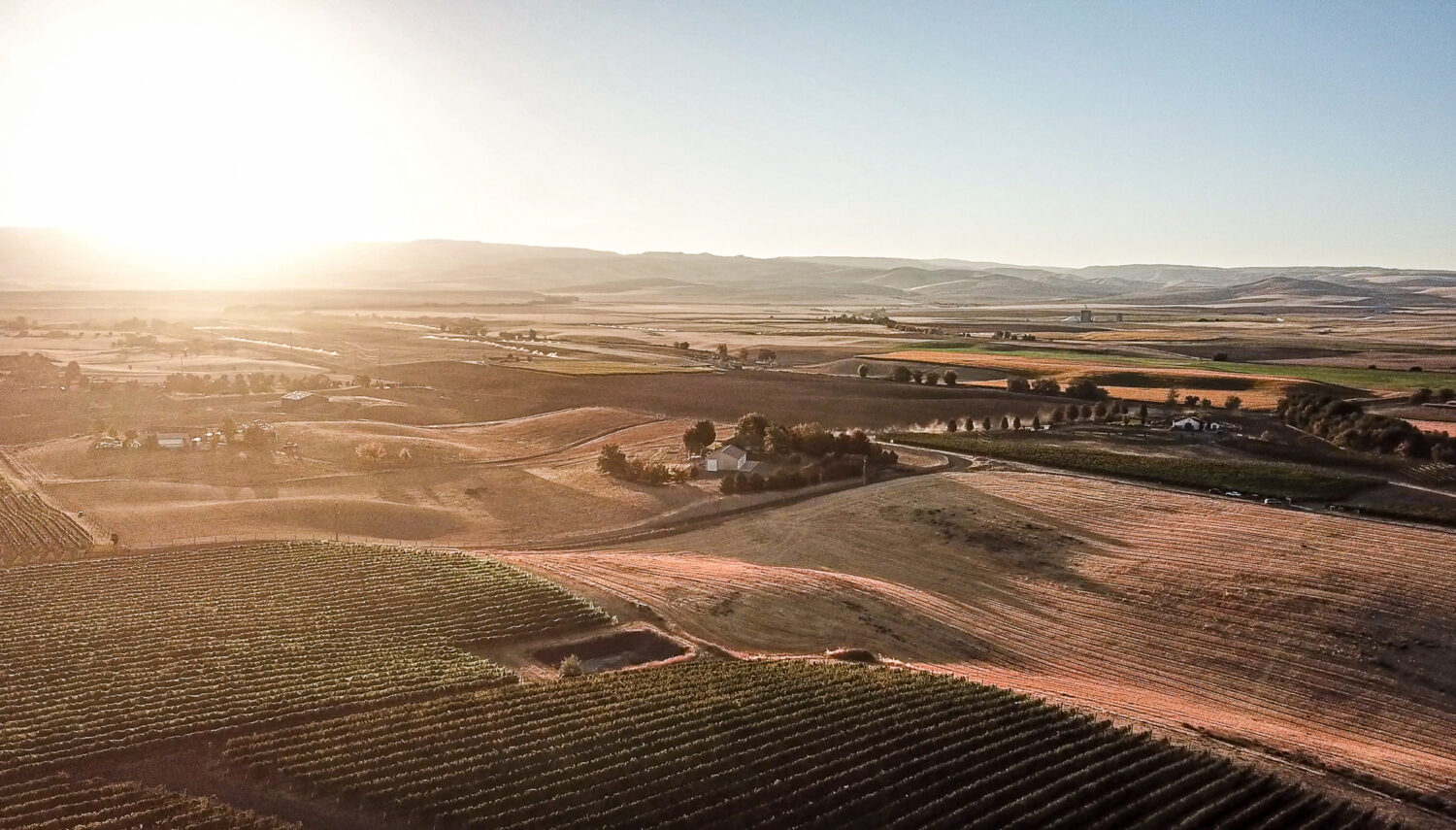Location: Central, south-central, and south- eastern Washington and north-central Oregon
Designated: 1984
Total Size: 11 million acres
Acreage Under Vine: Total vineyard acreage: 60,079 (24,313 hectares); Washington acreage: 59,234 (23,971 hectares)
Top Varieties: Cabernet Sauvignon, Chardonnay, Merlot, Riesling, Syrah
Soils: Loess overlying gravel and slackwater sediment with a basalt bedrock
Average Annual Precipitation: 6-8 inches
Two Things to Know:
- Over 99% of Washington’s acreage is planted in Columbia Valley.
- A rain shadow makes it an arid and semi-arid desert, ideal for grape growing.
Wholly located east of the Cascade Mountain range, the Columbia Valley gets its name from the river that cuts through and defines this area. The river itself was named after Captain Robert Gray’s ship, the Columbia Rediviva, which was the first to travel up the river in 1792.

The Columbia Valley lies in the rain shadow of the Cascade Mountain range. The low desert region has an arid and semi-arid, continental climate with limited rainfall. Irrigation is therefore required to grow vinifera grapes. However, the Columbia River is one of the largest rivers in the country. This river and its tributaries, along with aquifers, provide ample water for grape growing.
The use of irrigation, along with consistently warm, dry temperatures during the growing season, provides growers with a high amount of control over grape development compared to many other regions of the world. This leads to a smaller range of vintage variation and consistently high-quality wines.
The Columbia Valley’s soils are defined by the Missoula Floods, a series of cataclysmic events that occurred over 15,000 years ago. Most vineyards lie below the floodwaters, with soils of loess— windblown deposits of sand and silt—overlying gravel and slackwater sediment, with basalt forming the bedrock. The variations across the basin provide a diversity of soil types that are well-drained and ideal for viticulture.
In contrast to most other growing regions, many of the vines in Washington are own-rooted, which is said to contribute to a greater level of varietal typicity. Almost all of Washington’s growing regions are sub-appellations of the Columbia Valley. Exceptions are Puget Sound, Columbia Gorge, and Lewis-Clark Valley.
This is one of three AVAs that cross into Oregon, also known as cross-border AVAs.

